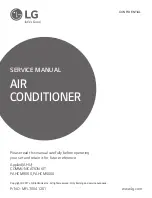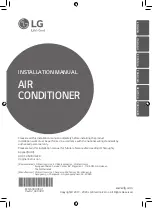
FORM 100.10-NOM2
27
YORK INTERNATIONAL
The current characteristics, phase, cycle and voltage
are stamped on the name late of each component.
1. Electrical conduit connections made to exposed
boxes on units should be made on the bottom of the
box.
Installation should comply with code re-
quirements. The installation should be made
watertight.
2. The installing contractor is responsible for electri-
cal conduit penetrations through the building roof.
Electrical conduits that penetrate the
exterior (walls and/or floor) of the
unit will need to be internally sealed
so that unconditioned air will not be
drawn into the unit through the inte-
rior of the conduit. This uncondi-
tioned air will result in condensation
that will fail control components pre-
maturely.
All penetrations through the unit
housing, pipe chase or cabinets must
be sealed inside and outside.
All exposed electrical connections
must be checked for tightness prior to
the actual startup. Many of the
connections contain several strands of
wire, and while they were tightened
at the time of assembly, and checked
at the time of run-in, they may have
developed a “set” and should be
re-tightened. The danger of a poor
connection can cause overheating
and component failure through
inadequate current handling
capacity. This danger cannot be over-
emphasized.
FIG. 31 –
TYPICAL MOTOR DATA / NAMEPLATE
A motor connection diagram may be found on the in-
side of the motor terminal box or on a tag attached to
the motor. Be sure to make a flexible conduit connec-
tion at the motor to permit fan belt adjustment. Refer
to Motor Data Nameplate for all motor specifications
(See Figure 31).
00464VIP
2














































